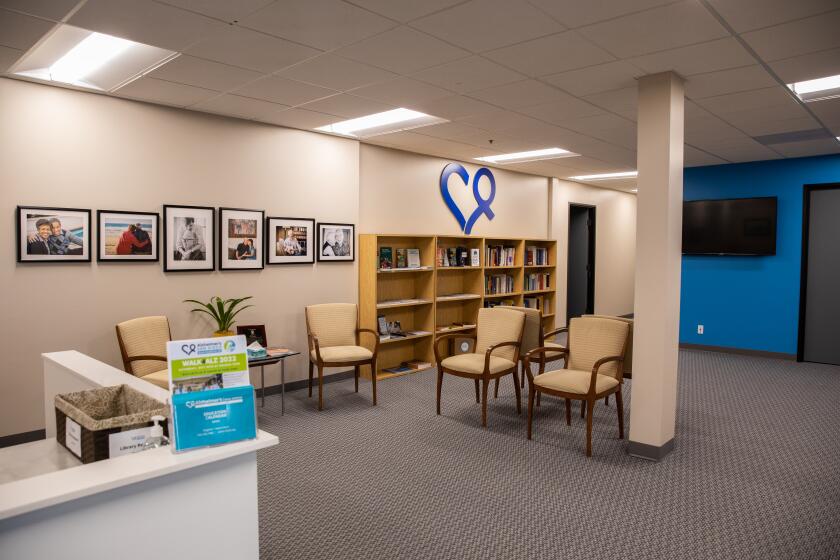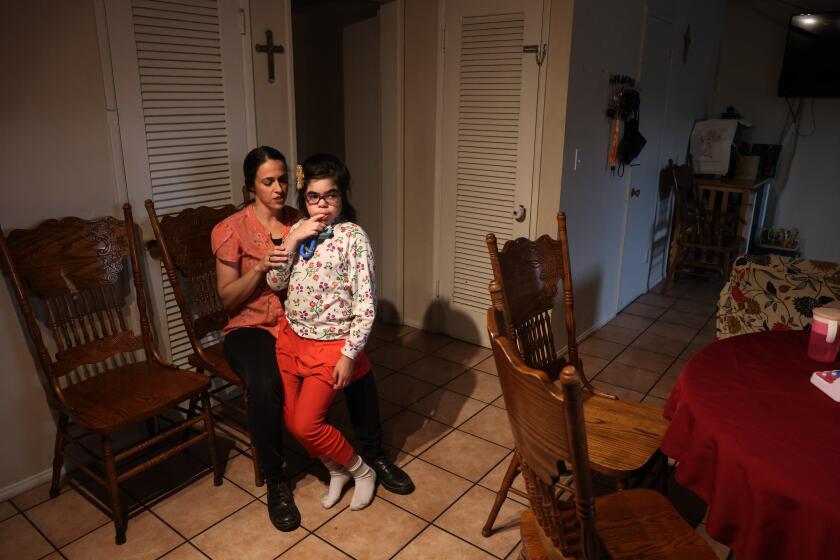Antidote to dementia? For now, knowledge, so read on
Dementia is considered a major public health threat in America, with millions of sufferers and caregivers affected. And an international study published in late-2018 says the number of individuals living with dementia worldwide is increasing: more than 43 million in 2016 compared to 20 million in 1990.
“Dementia represents a health threat that only worsens with time. It is an implacable foe,” said Dr. Howard Feldman, director of the Alzheimer’s Disease Cooperative Study. The study is a nearly 30-year-old national effort, based at UC San Diego, to develop and conduct clinical studies of new drugs to treat Alzheimer’s Disease.
The antidote to dementia, at least until there are true preventive measures and perhaps a genuine cure, is knowledge – about the disease, its symptoms and prospects for progress.
There are two things you can do now: Read this primer and sign up for a non-invasive memory screening Feb. 12, from 9 a.m. to 4 p.m., at the UCSD Shiley-Marcos Alzheimer’s research center in La Jolla.
The 20-minute screenings (a series of questions and tasks) are not diagnostic, but can help individuals determine whether their cognitive function is “typical” or “atypical” for their age. Center staff will be available to provide educational materials and feedback regarding assessments and perhaps suggest next steps. The screenings are free, but individuals 65 and older must call and schedule an appointment in advance at (858) 822-4800.
What is dementia?
Dementia is an umbrella term used to describe a range of symptoms associated with cognitive impairment and specific conditions. Alzheimer’s Disease is the most common, accounting for 50 to 75 percent of cases, followed by vascular (20 to 30 percent), Lewy bodies (10 to 25 percent) and frontotemporal (5 percent).
Roughly 5.5 million Americans have AD. The vast majority have the sporadic form, meaning its precise cause is unknown, but likely a combination of genes, environment and lifestyle. Women are at greater risk than men; almost two-thirds of Americans with AD are female.
It was long believed that women were more at risk because they live longer than men and age is the biggest risk factor. But new research suggests the reasons could be due to biological or genetic factors, different life experiences (such as education and occupation) or even sex-based standards for cognitive tests.
How AD Progresses
The first symptoms of AD tend to involve minor mishaps of short-term memory loss, such as forgetting important information once easily recalled, like appointments, conversations or recent events. Routine thinking skills may be disrupted, such as misjudging time or the sequence of steps required in a task.
Mild AD means the disease has spread to the lateral temporal and parietal lobes (reading and comprehension, sense of time and space, subtle changes in language). Over time, the accumulating symptoms become harder to ignore: reading problems and poor sense of direction. Disease progression accelerates.
It is followed by mild to moderate AD, in which the disease has spread to the frontal lobe (planning, reasoning, emotional control). Symptoms become sharper and more problematic: poor judgment, impulsivity and short attention.
What to look for and think about
Though the pathology of AD is not fully understood, there are clinical procedures, imaging technologies and other biomarker tests to help diagnose and assess the condition. Before that, however, it’s important to effectively screen for cognitive decline in an ordinary medical practice. For doctors in general, AD experts recommend:
- All middle-aged or older persons who self-report or whose family or physician report cognitive, behavioral or functional changes should undergo a timely, professional evaluation.
- Concerns should not be dismissed as “normal aging.”
- Evaluations should involve not only the patient and clinician, but also the care partner.
Age is the greatest known risk factor for AD. After age 65, the risk doubles every five years. After age 85, the risk reaches nearly one-third, according to the Alzheimer’s Association.
Family history is a risk factor, too. Persons who have a parent or sibling with AD are more likely to develop the disease.
Treatments now and on the horizon
There is no cure for AD. Current approaches and medications focus on helping patients maintain mental function, manage behavioral changes and slow symptoms of the disease.
For example, drugs like Zoloft, Cymbalta, Wellbutrin and Tofranil may be prescribed to manage AD symptoms such as depression, aggression, restlessness and anxiety, but experts advise using them only after other, non-pharmaceutical strategies have been tried without benefit.
There are only two types of medications currently approved by the U.S. Food and Drug Administration specifically for treating AD. The first, a drug class known as cholinesterase inhibitors (marketed under names like Aricept, Razadyne and Exelon), may help with aspects of mental function by helping prevent the breakdown of a brain chemical called acetylcholine, which is linked to memory and thinking. Cholinesterase inhibitors appear to work best for people in early or middle stages of AD.
The other approved drug is an N-methyl D-aspartate antagonist (Namenda). It is believed to regulate another important brain chemical called glutamate. Too much glutamate in the brain can lead to brain cell death, and diminished brain function.
But AD is confoundingly complex, which is a big reason why no new AD therapeutics have been approved by the FDA since Namenda in 2003. Indeed, it’s not likely that any single drug or intervention can successfully treat AD.
But billions of dollars have been and are being spent on new pharmaceutical possibilities, many with different therapeutic targets, from amyloid plaques and tangled tau proteins to cholesterol and inflammation. According to a survey published in the journal Alzheimer’s & Dementia, there were 112 agents in the AD treatment pipeline in 2018: 25 in phase I clinical trials, 75 in phase II and 35 in phase III.
In San Diego County, the clinicaltrials.gov database reports 19 studies in startup, recruiting or enrolling participants by invitation. Beyond its role as a research center, the Shiley-Marcos center is also a test site for four trials; several are currently enrolling participants. You can find out more about these trials and others by visiting clinicaltrials.ucsd.edu.
For more information:
Shiley-Marcos Alzheimer’s Disease Research Center at UC San Diego School of Medicine
UC San Diego Alzheimer’s Disease Cooperative Study
Get CaregiverSD in your inbox on Mondays
Helpful tips, information and resources from caregiverSD.com in your inbox Monday mornings.
You may occasionally receive promotional content from the San Diego Union-Tribune.










